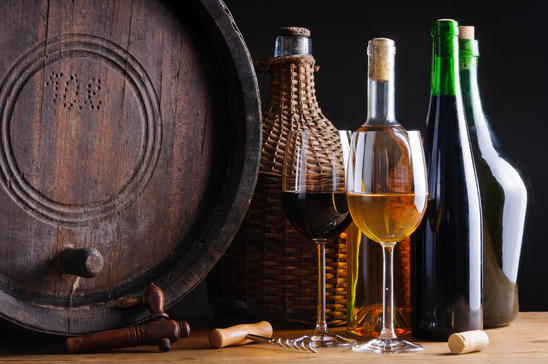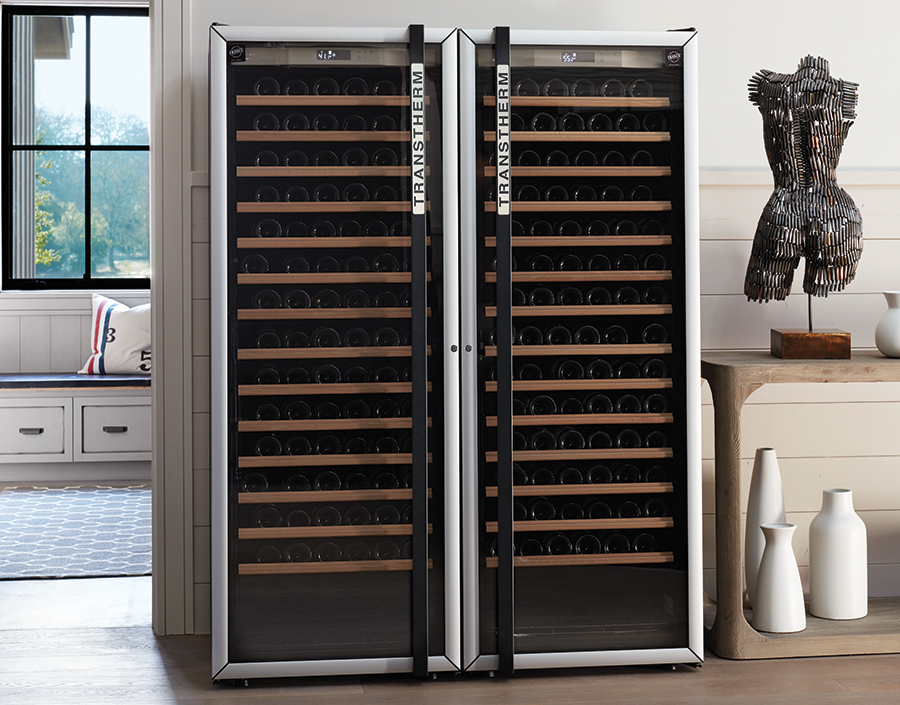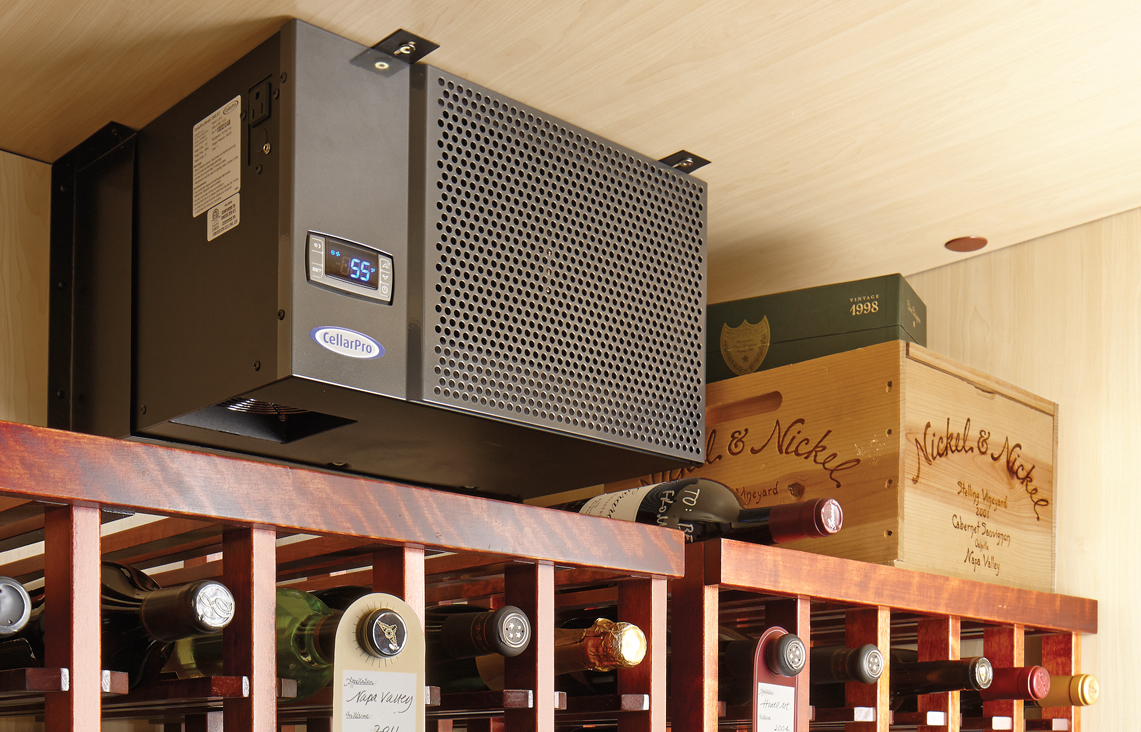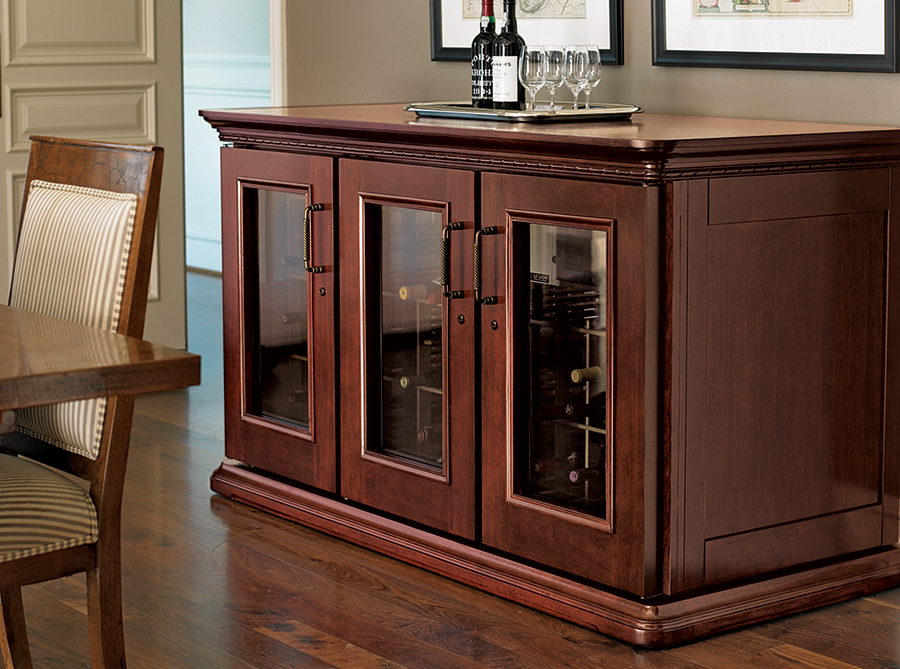
If you already own a fully equipped wine cabinet or custom wine cellar, chances are you have a good idea of which conditions your precious bottles of fine wine need to keep and develop with age. But if you don’t, then you may be tempted to think that a wine storage system is little more than a glorified refrigerator.
In fairness, an everyday wine cooler is similar to a refrigerator; they are designed to chill your wines shortly before you serve them, not for proper aging. If you’re serious about keeping wines in the long term, you’ll need an entirely different approach than a wine cooler. You’ll need a setup that replicates the ideal cellar environment, but what exactly are the best conditions for storing wine and why? Here’s a seven-point checklist of the most important things you need to consider.

1. Keep conditions cool
Fine wine needs to mature slowly. If the temperature is too high, you’ll speed up the process and the wine will have less time to develop its structure and bouquet. Even worse, if it gets too hot, then you’ll effectively end up stewing your wine, spoiling the flavor and flattening the aroma.
By contrast, wine stored below optimum temperature will develop far too slowly. Generally speaking, this isn’t such a serious problem, although you do run the risk of freezing your wine at a lower temperatures.
Experts have yet to agree on an exact wine storage temperature, but you’ll find most recommend a figure between 55° and 60° F.
2. Maintain stability
Wine is particularly sensitive to rapid warming or cooling. In fact, sudden swings in temperature can cause far more damage than the actual temperature itself. Temperature fluctuations can cause unwanted chemical reactions within the bottle. What’s more, liquid expands and contracts. That could mean wine seeping from your cork or even pushing it out altogether.
Wine will also suffer if you subject it to sudden movement or vibration, especially in the case of older bottles with build-ups of sediment. Avoid storing wine too close to a busy highway, railroad or machinery. Make sure your cellar or cabinet is well organized so that you can find a bottle without disturbing your other wine while digging through to find it.
3. Block out light
The sun’s UV radiation can cause premature aging of wine, just as it does to our skin. It’s one of the reasons why winemakers generally prefer bottles made from colored glass. You should keep exposure to sunlight to the absolute bare minimum. Always remember to switch off your cellar or cabinet light when you leave.

4. Regulate humidity
Your storage environment needs a good level of humidity, otherwise corks may dry out and shrink, allowing air to come into contact with the wine. By contrast, if you allow it to become too humid, labels can rot and peel off bottles.
A dedicated wine cooling unit is designed to help you maintain the right level of humidity, which should be between 50 and 80 percent. Avoid using air conditioning units to store your wine, because AC units are designed to keep people comfortable, which makes the air far too dry for wine storage.
5. Give your wine bottles some air circulation
Good air circulation is essential, as this will help keep away mold and prevent any intrusive odors from penetrating and spoiling your wine. Wine cabinets and wine cooling units accomplish this by using fans to keep the air moving inside the cellar.
6. Keep your wine cellar clean
Insects, mold and vermin can make their way anywhere, so keep your wine cellar or cabinet thoroughly clean and never put food, such as fruit and vegetables, in the same storage area. If your wine spills, make sure to do a good job cleaning up, but avoid using scented cleaning agents, as these can pollute the taste of your wine.

7. Lay down your bottles
Bottles are stored horizontally for a reason: to keep the cork moist and prevent air from getting into the bottle. Some wine racks incorporate a slight angle into their design to encourage deposits to form at the base of the bottle. If you live in earthquake territory, the angle will help keep your bottles from sliding off the racks.
Always lay your wine down with labels facing up, that way you can always see what it is without having to disturb it. Label forward racking can help accomplish this in a dramatic presentation.
Have you ever encountered problems storing your wine? What happened and how did you overcome it? Please tell us about it by leaving your comment below.
About the author: Kevin Carlton is a freelance copywriter and blogger, who has a deep affection for fine French wine. He is owner of website content service Write Online and runs the SEO copywriting blog Make every word work for you.
Dropping over from the Wine Wednesday Blog Hop!
We host our SUPER SUNDAY Link Parties every week beginning at 9pmEST on Saturday. Stop over and link up 🙂
Lori
Who Needs A Cape?
Not Your Average Super Moms…
When it comes to the wine storage environment stability is important in humidity just like it is in temperature.
– Heavenly Wine Rooms
It makes sense to me that if you want to make your wine last longer then regulate the humidity. I really liked the point especially about how air can come into the bottle because the air dries out the cork and causes it to shrink. I can see how this would be bad, especially since you want your wine to taste good rather than stale.
– Jay Jorgenson
Lovely article! I especially liked the bit about temperature fluctuations (maintain stability). I’m always fascinated by scientific things!
– Marina
Thanks for the sips for storing wine! My wife and I have started a wine collection, and we want to know how to take proper care of our bottles. I appreciate you mentioning to store your bottles horizontally to keep the cork moist. I had no idea that was something to do, but I will be sure to start.
– Ernest London
I never knew that scented cleaning stuff could affect the wine! That’s really good to know. I will make sure that we switch over to something else. I don’t want to hurt the value or taste of our wine!
– Jay
Question! I’m relocating my refrigerated wine storage unit from one part of the kitchen to another. I’m taking out all the bottles for approximately one hour. Is it safe to leave them at room temp for an hour or should store the bottles on their sides in a refrigerator until I can reposition them back in the cooler? Thank you!
– Arthur Geller
Hi Arthur,
If your kitchen ambient temperature is under 70F it is most likely okay to have the bottles out for an hour when relocating your wine cooler, however placing them in your refrigerator is the safest course of action to protect your collection before adding them back into your wine cooler.
I loved that you mentioned cleaning your wine cellar regularly will help you to keep your wine cellar working properly. My father is thinking about installing a wine cellar in his house, and we are looking for advice to give it maintenance. I will let him read your article to help him understand how to keep his wine cellar in good shape.
– Ellie Davis
Thanks for mentioning that one should consider storing the wine to avid moisturization. My brother wants to install a bar in his house. I will suggest he gets a wine cabinet or a bottle holder to store his wine.
– Eli Richardson
I found it interesting when you explained that it is important to keep the cork in a wine bottle moist by storing it horizontally. One of my friends wants to start drinking wine, and he is thinking it would be a good idea to store a couple of them so that they can taste better after they age. I think it would be a good idea for him to find a storage rack to use.
– Henry Killingsworth
Thanks for pointing out that having a lower temperature is key when storing wine. After our honeymoon in Italy, my husband and I had a renewed appreciation of wines to the point that we’re considering to transform our basement into a wine cellar. I hope we can find an installation service that can give us tips on how we could regulate the temperature down there.
– Alice Carroll
I have completely read your ideas and all of them are good. I like the wine freeze idea and lay down your bottles in a wine box idea. I have a wine freezer, but I have no wine rack box. Soon I will, but a wine rack.
– Leo
Exceptional Article! The tips you have mentioned in this article for the wine storage are impressive. Thanks for sharing!